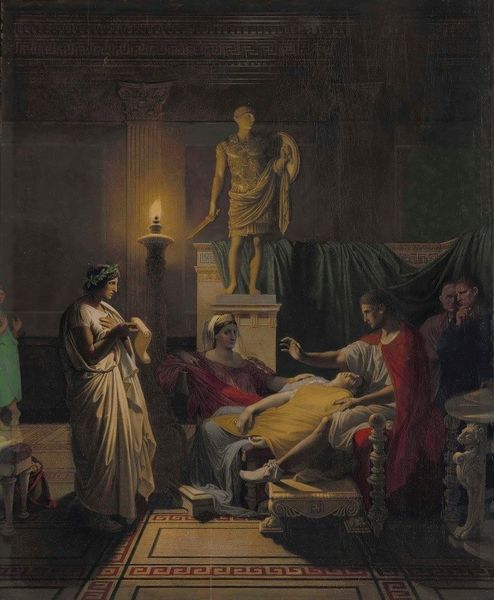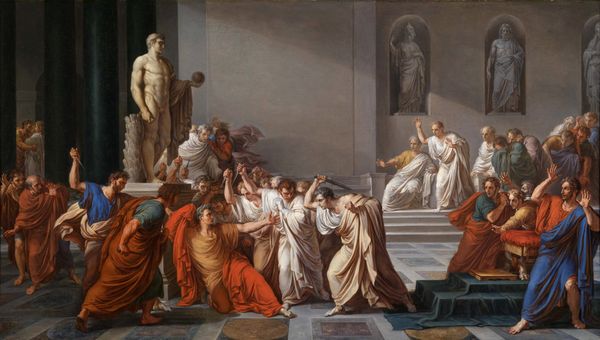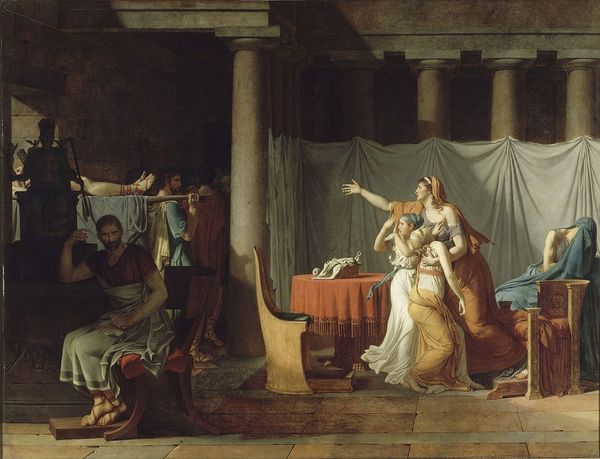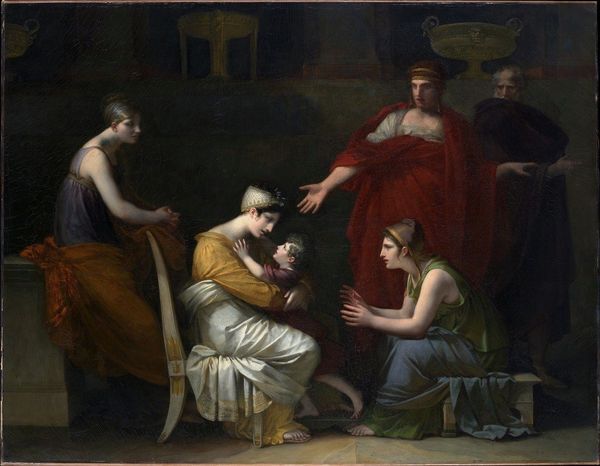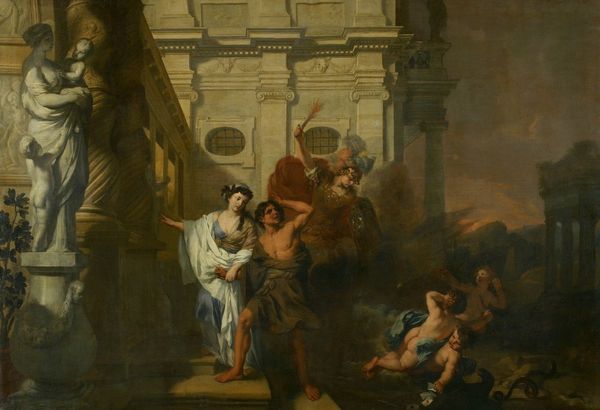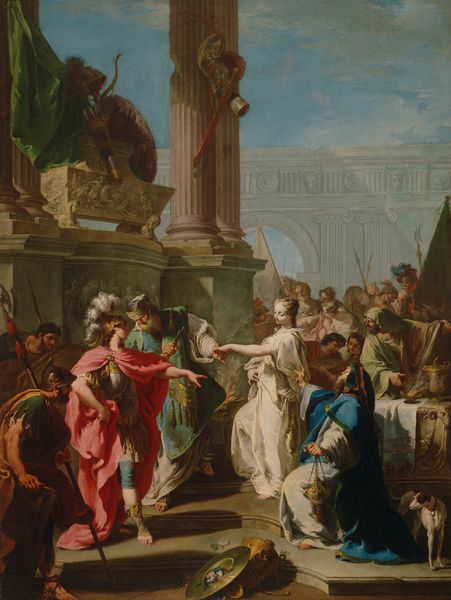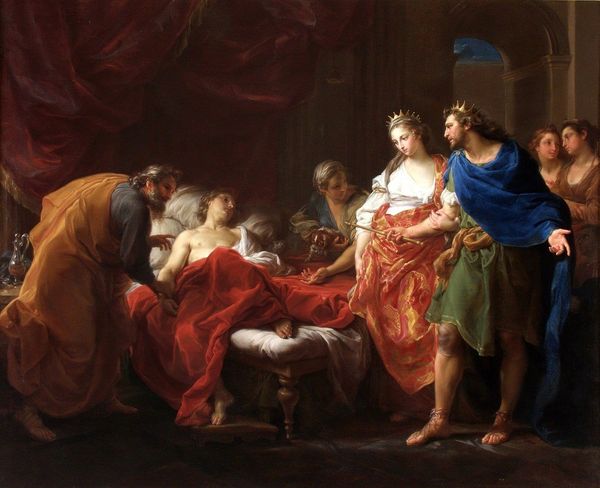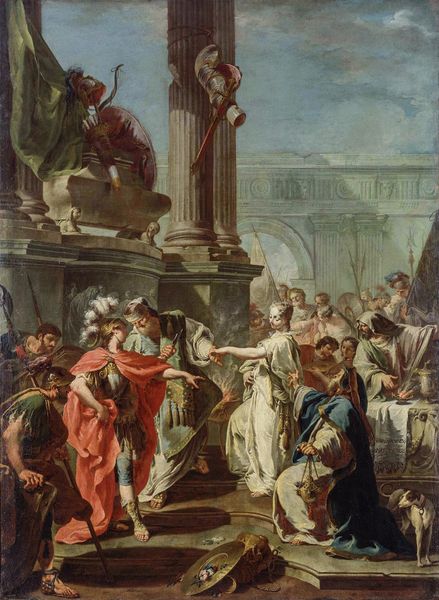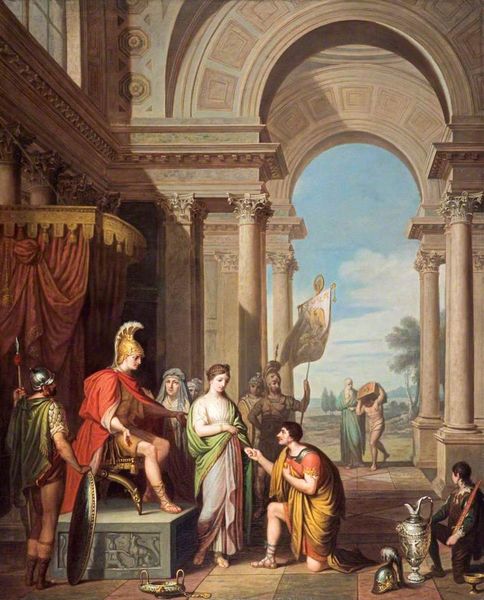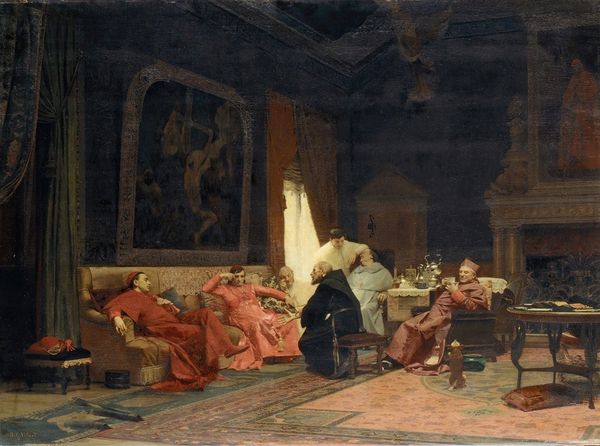
painting, oil-paint
#
figurative
#
neoclacissism
#
painting
#
oil-paint
#
figuration
#
oil painting
#
history-painting
#
academic-art
#
watercolor
Copyright: Public Domain: Artvee
Curator: What strikes me immediately about this scene is its anxiety—almost a sense of violation. Editor: I can see that. Here, we’re looking at Louis-Jean-François Lagrenée’s “Alexander Consulting the Oracle of Apollo,” painted in 1789, a historical painting rendered in oil. It presents a moment heavy with anticipation and, as you say, perhaps a sense of unease. Curator: Absolutely. Lagrenée masterfully uses the image of the smoke, billowing as though it holds the weight of destiny. And that Apollonian statue—it radiates power but also remoteness, like a god untouched by human frailty. It is very archetypal, right down to the checkerboard floor symbolizing order imposed upon chaos, visible right as the Oracle seems about to deliver ambiguous and fateful prophecy. Editor: True. But let’s think about this moment in 1789, right on the eve of the French Revolution. This painting wasn’t just about some distant, heroic past. Images of authority, like this statue of Apollo, were being critically re-evaluated. What does it *mean* to consult an oracle at a time when old certainties were collapsing? Is it an endorsement or critique of established power? Curator: It seems less about an endorsement and more about depicting the very human tendency to seek validation or foresight, regardless of the foundations upon which those systems stand. Notice the priestess, the anxiety in her face. This painting encapsulates how the visual depiction of uncertainty in symbols becomes itself, paradoxically, a very potent symbol. Editor: Indeed. Lagrenée, trained in the French Academy, here gives us a slice of antiquity viewed through the lens of Enlightenment doubt. By staging it in this way, by focusing on that point of intersection, doesn't that, itself, offer us the moment to pause and re-assess such staging and representations of power, then and now? The grand gesture of the pointing figure of Alexander seems almost bombastic in comparison to the vulnerable stance of the priestess, which adds layers to how power is perceived here, both politically and emotionally. Curator: It adds a vital sense of ambivalence, which I believe is a hallmark of powerful symbolism: less pronouncement, more profound inquiry. Editor: And that is what makes a painting like this—with all its historical baggage and artistic prowess—still able to speak so compellingly across the centuries.
Comments
No comments
Be the first to comment and join the conversation on the ultimate creative platform.
